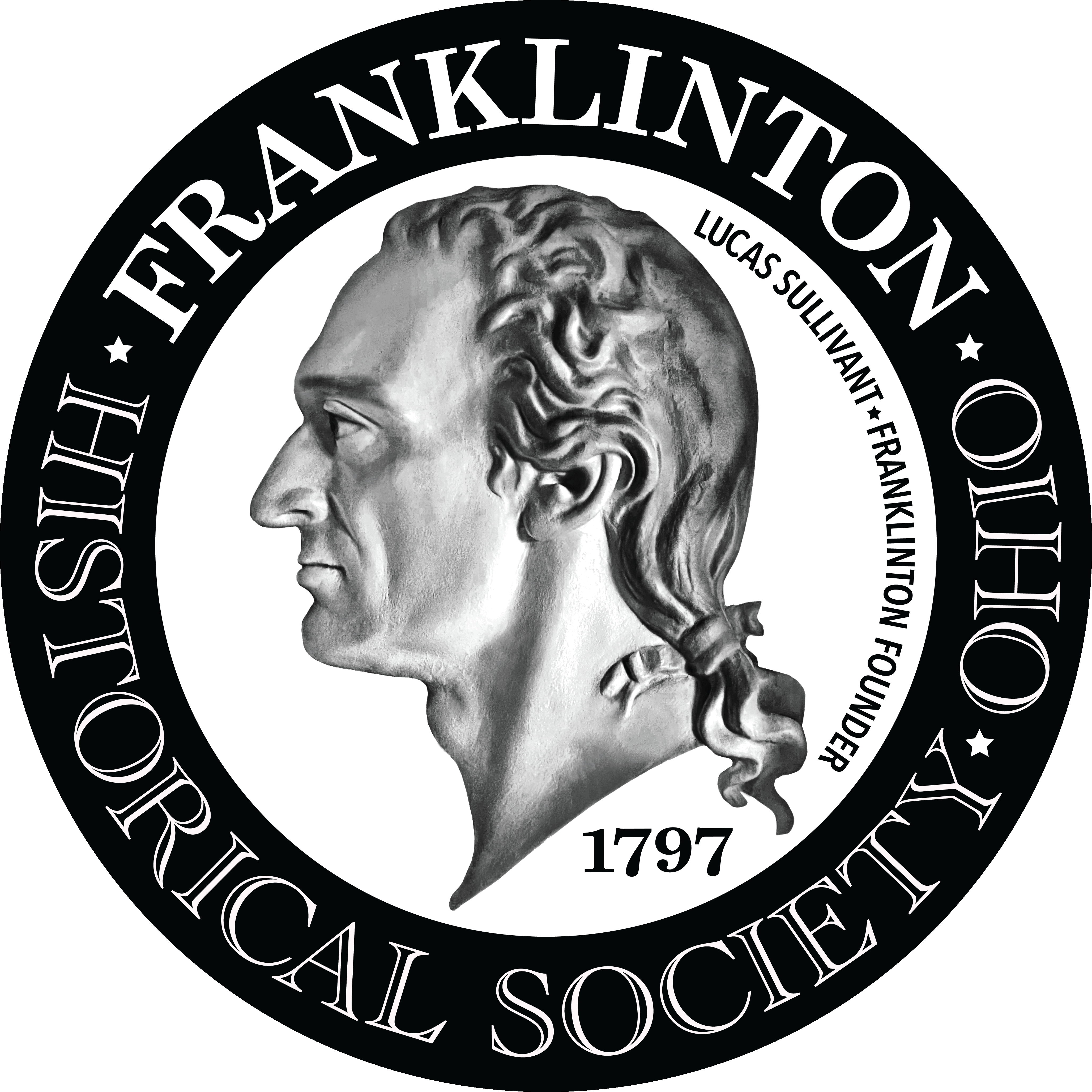Lucas Sullivant - Surveyor and Franklinton Founder
Lucas Sullivant was described as "muscular and well-built of medium height, well-proportioned, quick and active in his movement with an erect carriage and a good walk, and a well-balanced head finished off with a cue which he always wore, an aquiline nose, and blue-gray eyes, a firm mouth and a square chin. He was firm and positive in his opinions but courteous in manners and expression". This thorough description defines a determined young man set for adventure and exploration.
Virginia Military District surveyor and soldier Lucas Sullivant, at the age of 30, made several surveying trips to the forks of the Scioto River, one of several surveyors from the Kentucky headquarters sent into the field. These men would play a crucial role in building the state. Sullivant first came to Deer Creek with approximately twenty men; they would run into wild animals, thick brush, and hostile Indians. Nearly complete with his mission, he and his men came upon a band of Indians that outnumbered his party. Telling his men to hide in the nearby brush, Sullivant heard a shot from one of his men who had fired at wild Turkeys, giving notice of their presence. A brief encounter with the American Indians ensued, with two of Sullivant's men being killed; they scarcely escaped into the darkness.
In a later expedition, Sullivant located a tract of land for himself, the fertile lowlands opposite the "forks of the Scioto," which he acquired in payment from the Virginia Military District. Though not deterred by the thick forest or wild animals, he encountered many close calls; on this trip, he awoke one morning with a large rattlesnake coiled on his blanketed chest! In another encounter, a panther had perched in a tree above their campsite and sprang down on them; the animal was quickly dispatched by one of the men.
Sullivant was quite taken with the area's fertile soil and the lush forest, which boasted abundant waterways, all of which were exceptional and suited for a thriving settlement. In August 1797, Sullivant laid out his town of Franklinton, named after Benjamin Franklin, whom he admired. In 1798, the first plat was located at the junction of the two rivers; however, the plat soon flooded, so Sullivant relocated the village to higher ground to the west. He named one street Gift Street, offering free lots to those who would settle and build. The other streets were named for the earliest settlers, Foos, Green, Sandusky, Skidmore, and others. Sullivant began to build his own brick house that year, located on the southwest corner of the village's main intersection.
In 1801, Sullivant returned to Kentucky to wed Sarah Starling, bringing her to Franklinton to a two-story T-shaped brick home with twenty rooms, winding staircases, shiny walnut floors, and numerous large fireplaces. The back veranda had a breathtaking view of the Scioto Valley landscape. Lucas and Sarah had three sons and a daughter in the house. Sarah also raised an African American child named Arthur Boke after his mother disappeared. His father had been a surveying associate of Lucas Sullivant. With her husband often away on surveying trips, Sarah, with the children, lived the frontier life in the small village, always with the threat of Indian attack.
When Franklinton became an armed camp and mobilization point during the War of 1812, Sarah helped the soldiers through various illnesses. In the spring of 1814, typhus broke out in the army camp. Sarah nursed the sick night and day until she fell ill herself. She died, aged 33, on April 28, 1814. Their daughter, Sarah Anne, less than two years of age, died a month later of the same "cold plague" and was buried next to her mother in the old Franklinton Cemetery on River Street.
Lucas Sullivant raised their three sons, seeing them to successful colleges and careers. But just nine years after Sarah's death, Lucas would die of a new fever on August 8, 1823, at age 58, and be buried next to Sarah in the old Franklinton Cemetery. Later, Lucas and the Sullivant family would be re-interred at Greenlawn Cemetery in Columbus, Franklin County.

